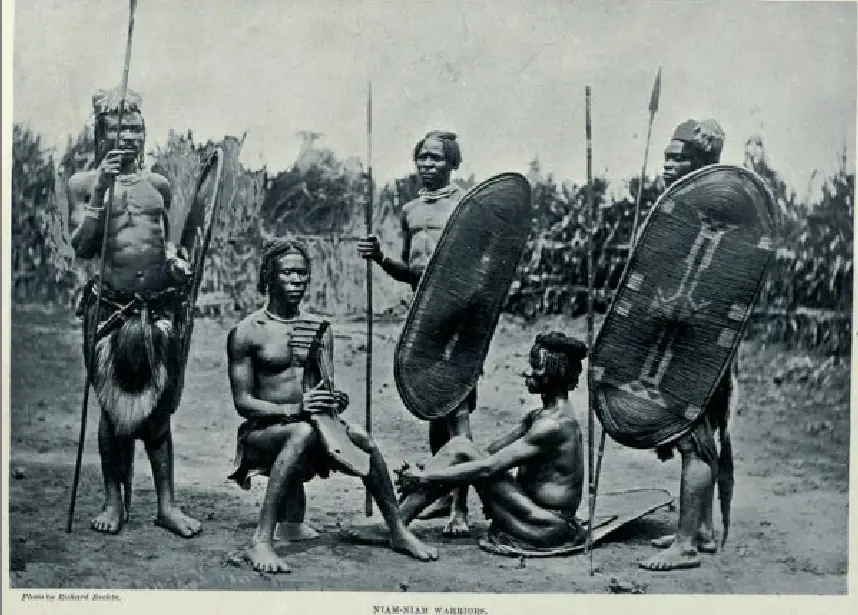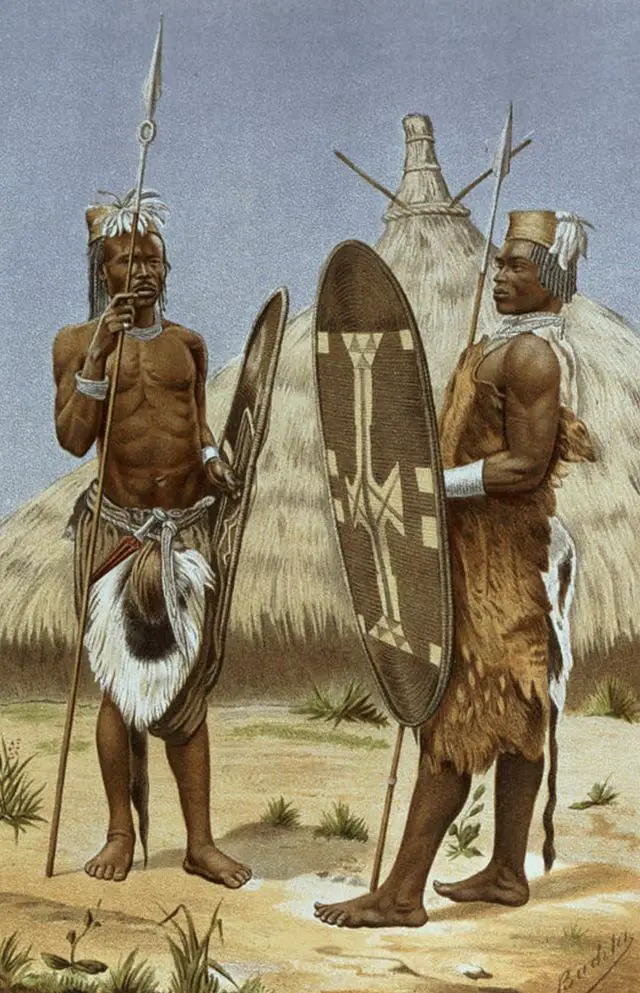As the British anthropologist, studying the Central African tribe of the Azande (or Zande) in the field, he intuited the “rational” aspect of their “magical-witchcraft” cult system.
di Maurilio Ginex
Edward E. Evans-Pritchard he represents one of the most important figures in the social anthropology of the British school and plays the role of the creator of some changes in perspectives that this social branch underwent in the twentieth century. Evans-Pritchard has made it possible to approach the diversity of the culturally other, without however invading the processes of identification of the culture under examination. adding to the being of these differences - among other things - a certain legitimacy and coherence. In 1937 Evans-Pritchard publishes Sorcery, oracles and magic among the Azande, one of the most famous works that world ethnography has ever been able to use. In this text, the author highlights how logically constituted the rationality of a people defined as "primitive" or "savage" by a Western judgment.
Certainly this is not the place where we will deal with reviewing the text cited here, but we will deal, through the latter, with one aspect in particular that will shed light on the innovations within this social science that made the author one of the greatest anthropologists of the past century. Appearance is represented by the nature of the magical thinking within that population known as the Azande (or Zande) of central Africa, settled between the present Sudan and Congo, where the author had conducted research between 1926 and 1930. Through the analysis that will lead us to understand the space that magic occupies in the Zande culture will be highlighted - in parallel - how in reality the difference, which is between a civilization defined as wild / primitive and a civilized civilization, lies in the fact that, respectively, the thought of the former is exercised on abstract things while in the case of the latter on concrete things and at the same time there is in the former a predisposition to representations of collective type. This primitive aspect will also be emphasized and further developed in the 60s by Claude Levi Strauss, about the analysis of wild thinking and research on totemism as a social classification system.

Evans-Pritchard explains how the magic in this population is something normalized and thought about daily. It does not fall into culture as something negative, as for example could happen in Western culture which is affected by the exclusivity of the Catholic religion and sees in other manifestations of divine entities a form of negativity of its own religion. Magic or rather what Evans-Pritchard calls in his text - specifically quoting it - "witchcraft", represents what is grafted into and from which the principle of causality of everything branches off in the eyes of the Azande. For this reason:
«… It represents a completely banal event and hardly a day goes by without him referring to it. Where we talk about harvests, hunting or the conditions of our neighbors, zande introduces the theme of "witchcraft" into the topic of the conversation ... "
It is a structure that determines the existential condition of Azande individuals. If for us Westerners things happen on the basis of categories of luck or bad luck, which is why - depending on how a situation evolves - we will be lucky or unlucky, for the Azande what happens is explained by the result of the relationship between witchcraft and the life of individuals. The British author, in his farsighted research, highlights a vivid identifying structure of their existence. Witchcraft, even if it does not have a real existence as the author himself states in his writing about it (1937: p. 51), represents an entity through which the individual can actually be-acted-by, in the words of Ernesto de Martino of South and Magic (1959), something that determines its psychology and belief. The author writes:
“We must bear in mind that, since witchcraft has no real existence, one person does not know that he has bewitched another, even if he is aware that he is ill-willed. But, at the same time, he strongly believes in witchcraft and the accuracy of the oracle of poison, so that when the oracle states that he is killing a man, he is likely grateful that he was warned in time. "
These words highlight an example of what psychological (and therefore existential) persuasion is in the face of entities, such as being in front of an oracle or a sorcerer, who - collectively and unconsciously - are capable of determining action. human. As the German says Gerardus Van deer Leeuwin Phenomenology of religion (1933), regarding what is defined as "divination", the latter "it is only secondarily concerned with foreseeing the future; he who questions does not want to know what will happen, he wants to know that what he desires will happen».

Therefore, persuasion also presents a veil of illusion of truth, as the signs that the sorcerer interprets, in the actual and finite then they represent the cause of what happens in front of the eyes. But it is still a structural fact, within witchcraft and its consequences, the fact that in this persuasion the logical rationality that Evans-Pritchard wanted to highlight in the face of the world is grafted by highlighting that even among the primitives there is a rationality that identifies a specific culture and that - at the same time - has logically necessary connotations (magic is such an example) and not necessarily readjusted to a dichotomy (perhaps, excessively positivist) true False. There is not only a West that acts as a court with its judgments on ethnocentric superiority, but there is also a world that is at the extreme, capable of giving rise to a linearity of identity that remains the object of study.
This is the core of that part of ethnology that it gives Lucien Levy-Bruhl to Claude Levi-Strauss embraces research conducted within pristine, marginalized and primitive peoples. Peoples, which in fact still exist today, representing a cultural diversity with their own logic of existence structured according to certain categories attributable to the universe of what EB tylor defined as "animism". The latter represents the theoretical and ideological basis of the primitive world, as Tylor himself stated in the beginning and as he would later theorize the Fraser of the magistral The branch golden (1890). The research conducted and the intention possessed by Evans-Pritchard is grafted onto this concept, that is, to explain it, in the manner of Levy-Bruhl de Les fonctions nervosa dans les sociètès inferior (1910), as in observing a population in which witchcraft and the various forms of acting attributable to magic were in reality elements constituting a very specific logic that is synthesized and identified by virtue of the act of normalization by a different that studies its becoming from a different point of view.

Themes, these, that from James Frazer to Lucien Levy-Bruhl had already been addressed in order to understand the extent of this specific rationality of the primitive, but with Evans-Pritchard we have properly witnessed a process that has highlighted the coherence of this rationality and the circumscription of a logic in the face of an act. In the work in question by the British author, among other things, there is a characteristic that Levy-Bruhl saw in the same way as he did in the ontological structure of the thought of the primitives. This feature lies in what is defined by the latter as "Impermeability to experience": a feature that can find a way to manifest itself in the fact that even if that magic, which for example the Azande in question use, had no confirmation in reality, equally, it would be used again without any disappointment in relation to the results produced. This lack of adherence to specific empirical responses on the part of reality is identifying due to the fact that the collective representations diffused in the various social structures of primitive peoples distance the individual from the objective experience of reality.
This study of the Azande population therefore set in motion a development of anthropological thought which found itself placing ideas such as those of an overcoming of what Levy-Bruhl defined as "pre-logical", with regard to primitive thought. Pre-logical did not indicate something that in the temporal development of the intellect represented an inferiority, but represented - as Hugh Fabietti he pointed out in History of anthropology (1990) - "a qualitative and non-quantitative difference between the mental activity of the primitive and that of the "civilized"". This prelogism, with Evans-Pritchard, saw its definitive epistemological collapse marked, as starting from its research the primitives and their world saw in front of it a research and an analysis based on the identification of a logical coherence of the structure constitutive of the society that belonged to him, in order to put them (the primitives) in relation with that same social structure that seeks to express their uses and customs.
Evans-Pritchard, with his analytical approach, also implemented the teachings of that master who then passed into the history of anthropology as the father of social anthropology, that is Bronislaw Malinowski. The latter was made concrete the meaning that was embodied within what was the field research. As Malinowski did in his time for the Trobiandesi, he did the same after Evans-Pritchard for the Azande. Living among them, becoming an intimate spokesperson for the culture that identified them and, being in direct contact between those individuals who in anthropological analysis take on the sacred role of social actors, he faceted their essence embodied in the nature of their culture.


Hello, from the photo is not E. E. Pritchard with the Azande, known as Malinowski with the Trobriandern. Dieses Foto wird jetzt leider sogar angezeigt, wenn man bei Google “Pritchard Azande” eingibt.